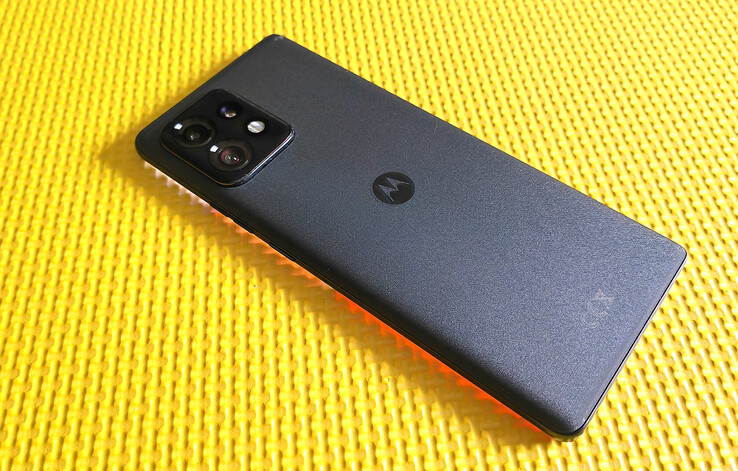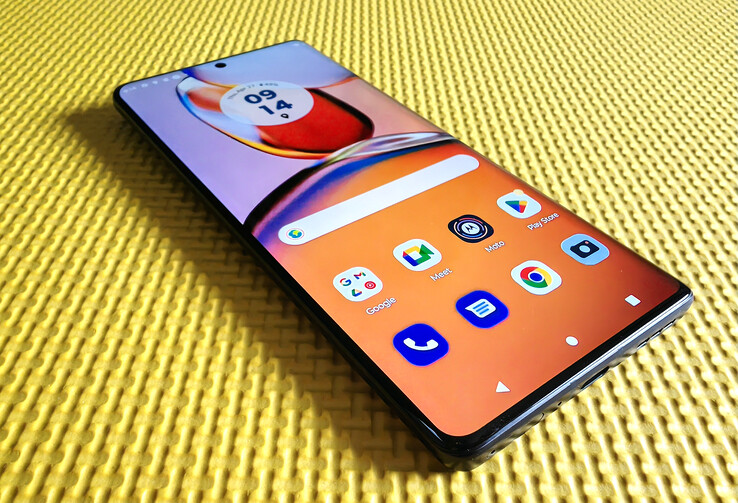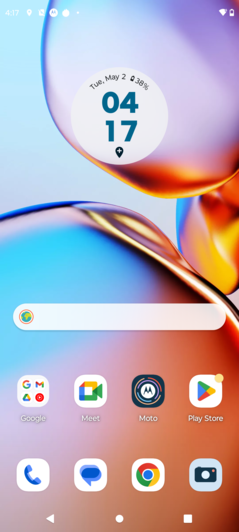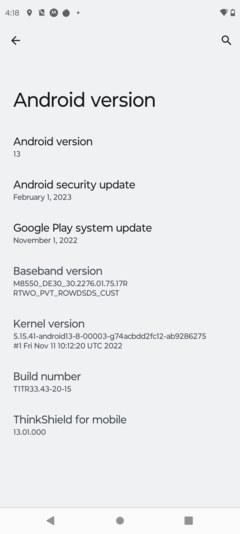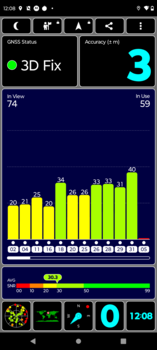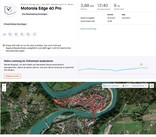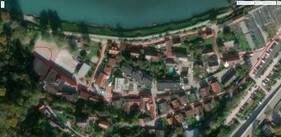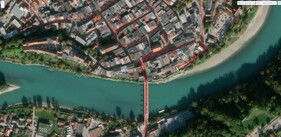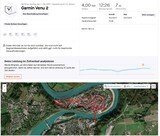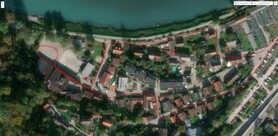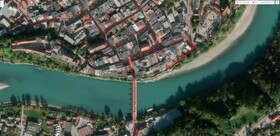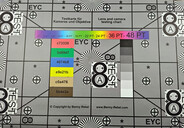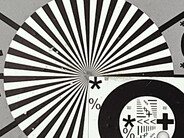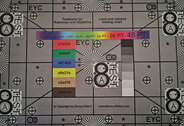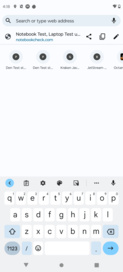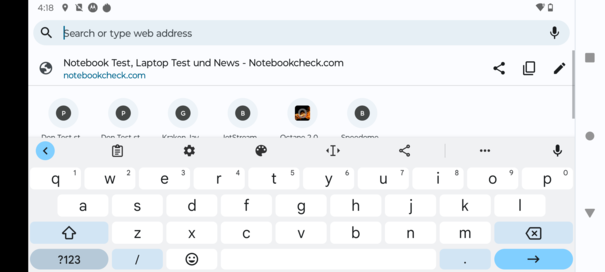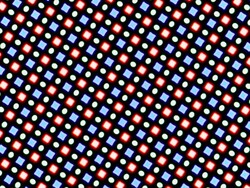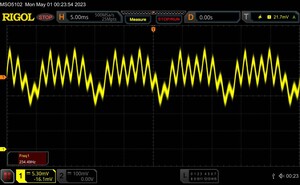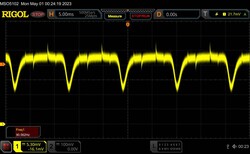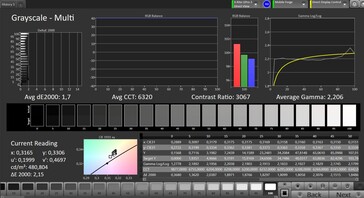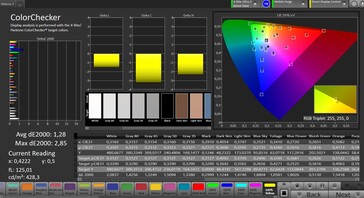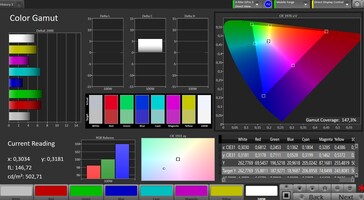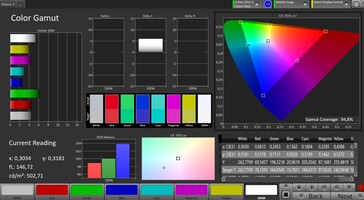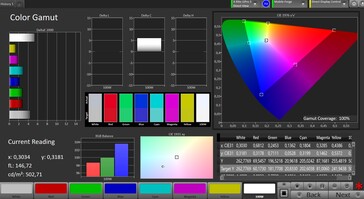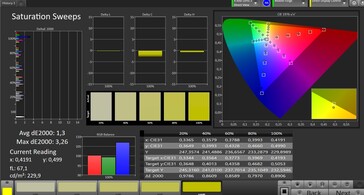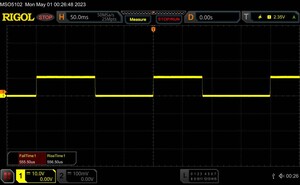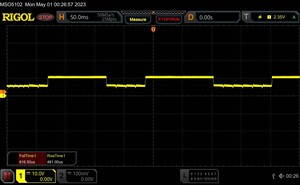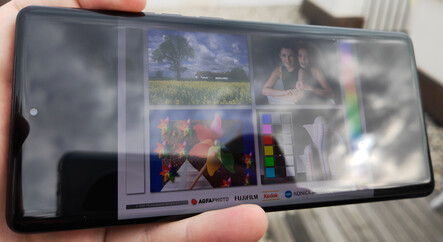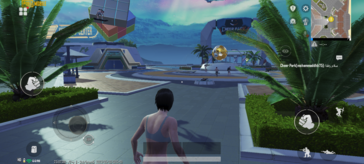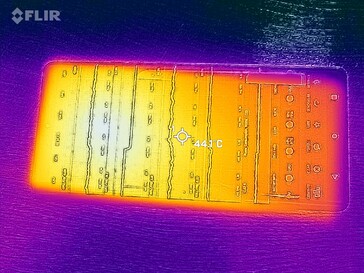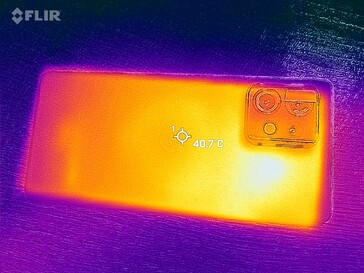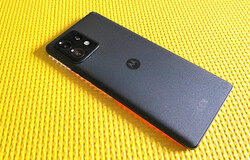Motorola Edge 40 Pro review: High-end smartphone with 165 Hz display at a reasonable price
Motorola's Edge Pro has come a long way since the first Pro model was launched two years ago, namely the Edge 20 Pro, which started at a competitive price of EUR 699 (~US$850). The Edge 30 Pro was EUR 100 (US$100) more expensive last year and the Edge 40 Pro is also going up significantly in price this year and costs EUR 899 (~US$990).
At the same time, the Edge 30 Pro was superior to its predecessor in many respects. If the Edge 40 Pro once again shows improvements in as equally many respects, it may be worth considering despite the price increase.
Possible competitors in comparison
Rating | Date | Model | Weight | Drive | Size | Resolution | Price |
|---|---|---|---|---|---|---|---|
| 89.4 % v7 (old) | 05 / 2023 | Motorola Edge 40 Pro SD 8 Gen 2, Adreno 740 | 199 g | 256 GB UFS 4.0 Flash | 6.67" | 2400x1080 | |
| 87.9 % v7 (old) | 03 / 2022 | Motorola Edge 30 Pro SD 8 Gen 1, Adreno 730 | 196 g | 256 GB UFS 3.1 Flash | 6.70" | 2400x1080 | |
| 89.2 % v7 (old) | 03 / 2023 | Xiaomi 13 Pro SD 8 Gen 2, Adreno 740 | 229 g | 256 GB UFS 4.0 Flash | 6.73" | 3200x1440 | |
| 90.1 % v7 (old) | 07 / 2023 | Honor Magic5 Pro SD 8 Gen 2, Adreno 740 | 219 g | 512 GB UFS 4.0 Flash | 6.81" | 2848x1312 | |
| 88.7 % v7 (old) | 10 / 2022 | Apple iPhone 14 Plus A15, A15 GPU 5-Core | 203 g | 128 GB NVMe | 6.70" | 2778x1284 |
Case - Shimmering back
A smartphone from Motorola's Edge family can be recognized by the rounded corners, and the front and back converge on the sides to form a narrow aluminum frame. The Edge 40 Pro is no different, and the satin glass back is also present. This time, however, it is slightly roughened and shimmers in the light.
Gorilla Glass Victus provides the necessary stability, and the smartphone is also IP68 certified, namely protected against water. So it can survive in shallow water for a few minutes without damage.
Overall, the smartphone looks sturdy, but can be dented a little in the middle, which slightly reduces the quality impression. Otherwise, it is very cleanly manufactured with smooth material transitions and good ergonomics.
Motorola offers dark gray and light blue as color variants. At less than 200 grams, the Motorola Edge 40 Pro is a very light phone for its size. It is also a few millimeters more compact than its predecessor, although you'll hardly notice the difference in everyday use.
Equipment – The USB port is also a DisplayPort
For just under US$1000, the Motorola phone comes with 12 GB of RAM and 256 GB of UFS 4.0 flash, the usual equipment for a high-end phone these days.
At first glance, the USB-C port is pleasing because Motorola states in the data sheet that it is a USB 3.2-speed port. However, owing to the completely confusing naming of the USB consortium, it is only as fast as a USB 3.0 port. As consolation, it can at least output a picture signal according to the DisplayPort 1.4 standard and exchange data via OTG.
NFC, for wireless payment transactions, is of course on board, as is support for an eSIM. Together with a Nano-SIM, you can then use a total of two SIM cards in the device. However, there is no microSD card reader for memory expansion.
Software - Update promise not kept so far
Motorola traditionally installs stock Android on its smartphones. The Motorola Edge 40 Pro comes with Android 13. How many operating system updates there will be has not been disclosed, but Android 14 is definitely on the cards.
The security patches are from February 2023 and thus already outdated at the time of review, which is particularly embarrassing for a high-end phone. Especially since Motorola promises security updates every month. The smartphone is supposed to receive security patches until April 2027, which is just under four years from now.
There are only a few third-party apps on the phone, and these can be quickly deleted.
Like its predecessors, the Edge 40 Pro supports Motorola's Ready For technology, which allows for the smartphone to be used as a possible PC replacement or in combination with a PC. It connects to a screen wirelessly or via USB-C, can be connected to a mouse and keyboard via Bluetooth and supports a suitable desktop mode for this. The phone can also mirror video calls on a larger screen.
Communication and GNSS - WLAN brake
WiFi 6E, i.e. the capability of using the little-used 6 GHz band for WiFi, is considered good form in high-end phones, and the Motorola Edge 40 Pro is no exception here. The manufacturer even promises that the smartphone will be capable of the next WiFi 7 standard.
However, in our practical test with the Asus ROG Rapture AXE 11000 reference router, the Edge 40 Pro is not really impressive. The speeds are by no means slow at around 800 MBit/s and are also relatively stable, but smartphones such as the Xiaomi 13 Pro or the Honor Magic5 Pro achieve double these rates.
Of course, the Edge 40 Pro is a 5G phone and can be used worldwide. Signal quality is always on par with other high-end devices under testing, both indoors and outdoors, and is very strong overall.
| Networking | |
| iperf3 receive AXE11000 | |
| Honor Magic5 Pro | |
| Motorola Edge 30 Pro | |
| Xiaomi 13 Pro | |
| Average of class Smartphone (52 - 1721, n=176, last 2 years) | |
| Apple iPhone 14 Plus | |
| iperf3 transmit AXE11000 | |
| Honor Magic5 Pro | |
| Xiaomi 13 Pro | |
| Motorola Edge 30 Pro | |
| Apple iPhone 14 Plus | |
| Average of class Smartphone (49.8 - 1828, n=176, last 2 years) | |
| iperf3 transmit AXE11000 6GHz | |
| Xiaomi 13 Pro | |
| Average of class Smartphone (508 - 1945, n=95, last 2 years) | |
| Motorola Edge 40 Pro | |
| iperf3 receive AXE11000 6GHz | |
| Xiaomi 13 Pro | |
| Average of class Smartphone (451 - 1870, n=95, last 2 years) | |
| Motorola Edge 40 Pro | |
Upon stepping outside, it takes two seconds for the smartphone to localize itself up to an accuracy of a good 3 meters. The Motorola Edge 40 Pro falls back on GPS, Galileo, Glonass and Beidou for localization, but not the SBAS system. A large number of satellites were found in our test.
In order to determine the smartphone's real-world tracking capabilities, we went for a bike ride, also taking the Garmin Venu 2 smartwatch for comparison purposes.
Overall, the Motorola Edge 40 Pro does quite well both in open terrain and in narrow old town streets and shows only minor inaccuracies. The smartphone is therefore well suited to everyday navigation.
Telephony and Voice Quality - Somewhat muffled microphones
When making calls, the earpiece can get very loud if desired, but other people in the immediate vicinity are likely to hear everything that is said. The microphones transmit our voice clearly, but somewhat muffled.
The voice of our conversation partner can also be reproduced very loudly via the loudspeaker and hands-free microphone. Our voice also sounds a bit muffled here, but is understandable for the other party.
Cameras - No periscope zoom
Motorola does not skimp on high-resolution lenses in its high-end smartphone. In addition to the 50-megapixel main camera with optical image stabilization, the wide-angle camera also has a resolution of 50 megapixels. The telephoto camera for extreme close-ups still has 12 megapixels, and the selfie camera, which is integrated into the screen as a punchhole, also offers an impressive resolution of 60 megapixels.
The Edge 40 Pro does not come with a periscope, i.e. actual optical zoom. Instead, the 3 lenses on the back are cleverly combined and used depending on the situation.
The main camera takes good, colorful pictures, although it doesn't quite come close to the richness of detail of the camera in the iPhone 14. The image of the surrounding environment looks a bit muddy in detail, even compared to other Android phones. In weak light, on the other hand, the optics show their strengths, even if the sharpness in detail could be a little better.
Videos can be recorded for slow motion footage in Full HD at up to 960 fps, which is 32 times slower than 30 fps. 8K recordings at up to 30 fps is also possible. And in 4K at 30 fps, even HDR 10+ videos are possible. Films from the camera system look great, but the brightness adjustment is sometimes a bit jittery and the autofocus could also be faster and more precise from time to time.
The front-facing camera takes high-quality selfies with a lot of detail, even in dark areas.
Image comparison
Choose a scene and navigate within the first image. One click changes the position on touchscreens. One click on the zoomed-in image opens the original in a new window. The first image shows the scaled photograph of the test device.
Main camera - plantMain camera - surrounding environmentMain camera - low lightWide angle cameraIn the studio, we tried out the main camera once again in fixed lighting situations. Here it shows a clean, sharp and detailed image in full lighting. At an intensity of just 1 lux, the chart and colors are still clearly visible, but details such as small text become unrecognizable.
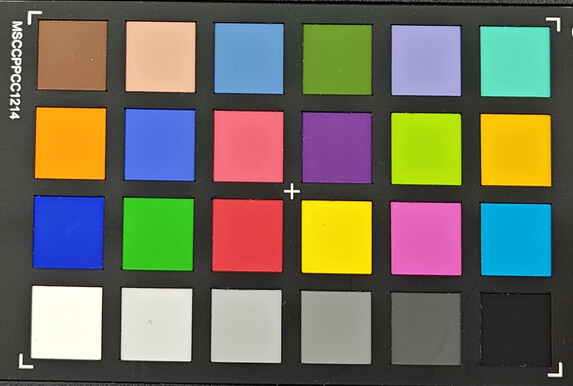
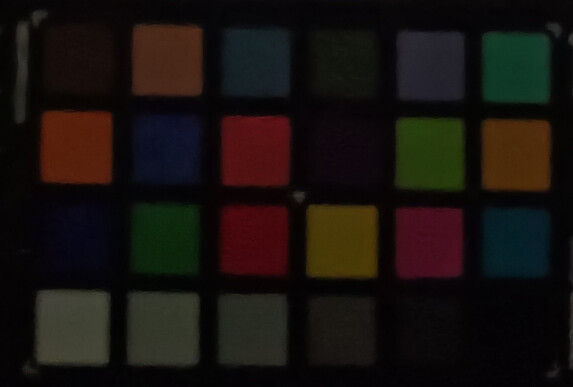
Accessories and Warranty - 24 months warranty
In addition to a charger and the appropriate USB cable as well as a SIM tool, the smartphone also comes with a protective silicone case. Special accessories for the smartphone are currently unavailable in Motorola's online store.
The manufacturer provides a 24-month warranty for the smartphone in the EU. This may differ in other countries and regions, so buyers should double check before purchasing.
Input Devices & Operation - Very smooth inputs
The 165 Hz display ensures that images displayed on the screen whilst scrolling and the scrolling itself are very smooth. The touchscreen responds to inputs up to 360 times per second and can be operated very well right up to the corners. Since the display is stretched over the sides, this could lead to incorrect inputs when holding the phone in the hand, but this was not a problem in our tests.
The fingerprint sensor is integrated quite far down into the display. Nevertheless, fingerprint recognition worked well, even without changing hands. Even in standby, the fingerprint sensor also unlocks the device with minimal delay. Facial recognition is also possible and works reliably. In the dark, the screen's residual light is usually sufficient for recognition. However, 2D software recognition is not quite as safe without an additional sensor.
Display - Very bright OLED in the Edge 40 Pro
The OLED display in Motorola's Edge 40 Pro is much brighter than its predecessor: at over 1,000 cd/m² of full-area illumination, the panel has no issue displaying HDR content in the corresponding brightness.
However, some competitors offer even more brightness and the Edge 40 Pro is only average in terms of resolution.
| |||||||||||||||||||||||||
Brightness Distribution: 92 %
Center on Battery: 1056 cd/m²
Contrast: ∞:1 (Black: 0 cd/m²)
ΔE ColorChecker Calman: 1.28 | ∀{0.5-29.43 Ø4.77}
ΔE Greyscale Calman: 1.7 | ∀{0.09-98 Ø5}
147.3% sRGB (Calman 2D)
Gamma: 2.206
CCT: 6320 K
| Motorola Edge 40 Pro P-OLED, 2400x1080, 6.7" | Motorola Edge 30 Pro AMOLED, 2400x1080, 6.7" | Xiaomi 13 Pro OLED, 3200x1440, 6.7" | Honor Magic5 Pro OLED, 2848x1312, 6.8" | Apple iPhone 14 Plus OLED, 2778x1284, 6.7" | |
|---|---|---|---|---|---|
| Screen | -4% | 9% | -18% | -3% | |
| Brightness middle (cd/m²) | 1056 | 649 -39% | 1230 16% | 1291 22% | 797 -25% |
| Brightness (cd/m²) | 1055 | 649 -38% | 1244 18% | 1289 22% | 800 -24% |
| Brightness Distribution (%) | 92 | 98 7% | 94 2% | 96 4% | 97 5% |
| Black Level * (cd/m²) | |||||
| Colorchecker dE 2000 * | 1.28 | 1.18 8% | 1 22% | 1.7 -33% | 0.97 24% |
| Colorchecker dE 2000 max. * | 2.85 | 2.07 27% | 2.8 2% | 4.4 -54% | 1.76 38% |
| Greyscale dE 2000 * | 1.7 | 1.5 12% | 1.8 -6% | 2.9 -71% | 2.3 -35% |
| Gamma | 2.206 100% | 2.236 98% | 2.24 98% | 2.28 96% | 2.531 87% |
| CCT | 6320 103% | 2538 256% | 6446 101% | 6472 100% | 6492 100% |
* ... smaller is better
Screen Flickering / PWM (Pulse-Width Modulation)
| Screen flickering / PWM detected | 235 Hz | ||
The display backlight flickers at 235 Hz (worst case, e.g., utilizing PWM) . The frequency of 235 Hz is relatively low, so sensitive users will likely notice flickering and experience eyestrain at the stated brightness setting and below. In comparison: 53 % of all tested devices do not use PWM to dim the display. If PWM was detected, an average of 8091 (minimum: 5 - maximum: 343500) Hz was measured. | |||
Series of measurements at a fixed zoom level and different brightness settings
We noticed screen flickering at very low screen brightness, but you can activate a "Flicker Prevention" mode in the display settings, which adapts the flickering to the refresh rate and thus makes it inconspicuous.
According to our measurements with the spectrophotometer and CalMAN software, color representation is very accurate in the "Natural" image mode. No blue cast was detected.
Display Response Times
| ↔ Response Time Black to White | ||
|---|---|---|
| 1.1 ms ... rise ↗ and fall ↘ combined | ↗ 0.55 ms rise | |
| ↘ 0.55 ms fall | ||
| The screen shows very fast response rates in our tests and should be very well suited for fast-paced gaming. In comparison, all tested devices range from 0.1 (minimum) to 240 (maximum) ms. » 4 % of all devices are better. This means that the measured response time is better than the average of all tested devices (20.2 ms). | ||
| ↔ Response Time 50% Grey to 80% Grey | ||
| 1.1 ms ... rise ↗ and fall ↘ combined | ↗ 0.6 ms rise | |
| ↘ 0.5 ms fall | ||
| The screen shows very fast response rates in our tests and should be very well suited for fast-paced gaming. In comparison, all tested devices range from 0.165 (minimum) to 636 (maximum) ms. » 4 % of all devices are better. This means that the measured response time is better than the average of all tested devices (31.6 ms). | ||
Performance - With the power of the Snapdragon
Thanks to the Snapdragon 8 Gen 2, the Motorola Edge 40 Pro is on par with other high-end smartphones in terms of performance. Even the iPhone 14 comes within reach. This means that very demanding apps pose no issue for the smartphone, and it hardly ever stutters in everyday life.
| UL Procyon AI Inference for Android - Overall Score NNAPI | |
| Average of class Smartphone (3769 - 81594, n=134, last 2 years) | |
| Motorola Edge 40 Pro | |
| Xiaomi 13 Pro | |
| Average Qualcomm Snapdragon 8 Gen 2 (11338 - 16880, n=21) | |
| Honor Magic5 Pro | |
| AImark - Score v3.x | |
| Average Qualcomm Snapdragon 8 Gen 2 (941 - 173234, n=18) | |
| Average of class Smartphone (82 - 307528, n=121, last 2 years) | |
| Xiaomi 13 Pro | |
| Honor Magic5 Pro | |
| Motorola Edge 40 Pro | |
Our test device also does very well in the graphics benchmarks and even overtakes the other devices in some cases. So, graphically demanding apps and games shouldn't be a problem in terms of performance.
GFXBench (DX / GLBenchmark) 2.7: T-Rex Onscreen | 1920x1080 T-Rex Offscreen
GFXBench 3.0: on screen Manhattan Onscreen OGL | 1920x1080 1080p Manhattan Offscreen
GFXBench 3.1: on screen Manhattan ES 3.1 Onscreen | 1920x1080 Manhattan ES 3.1 Offscreen
GFXBench: on screen Car Chase Onscreen | 1920x1080 Car Chase Offscreen | on screen Aztec Ruins High Tier Onscreen | 2560x1440 Aztec Ruins High Tier Offscreen | on screen Aztec Ruins Normal Tier Onscreen | 1920x1080 Aztec Ruins Normal Tier Offscreen | 3840x2160 4K Aztec Ruins High Tier Offscreen
| 3DMark / Wild Life Extreme Unlimited | |
| Xiaomi 13 Pro | |
| Honor Magic5 Pro | |
| Motorola Edge 40 Pro | |
| Apple iPhone 14 Plus | |
| Motorola Edge 30 Pro | |
| 3DMark / Wild Life Extreme | |
| Xiaomi 13 Pro | |
| Honor Magic5 Pro | |
| Motorola Edge 40 Pro | |
| Apple iPhone 14 Plus | |
| Motorola Edge 30 Pro | |
| GFXBench (DX / GLBenchmark) 2.7 / T-Rex Onscreen | |
| Xiaomi 13 Pro | |
| Motorola Edge 40 Pro | |
| Motorola Edge 30 Pro | |
| Honor Magic5 Pro | |
| Apple iPhone 14 Plus | |
| GFXBench (DX / GLBenchmark) 2.7 / T-Rex Offscreen | |
| Xiaomi 13 Pro | |
| Motorola Edge 40 Pro | |
| Honor Magic5 Pro | |
| Apple iPhone 14 Plus | |
| Motorola Edge 30 Pro | |
| GFXBench 3.0 / Manhattan Onscreen OGL | |
| Xiaomi 13 Pro | |
| Motorola Edge 40 Pro | |
| Motorola Edge 30 Pro | |
| Honor Magic5 Pro | |
| Apple iPhone 14 Plus | |
| GFXBench 3.0 / 1080p Manhattan Offscreen | |
| Xiaomi 13 Pro | |
| Motorola Edge 40 Pro | |
| Honor Magic5 Pro | |
| Apple iPhone 14 Plus | |
| Motorola Edge 30 Pro | |
| GFXBench 3.1 / Manhattan ES 3.1 Onscreen | |
| Motorola Edge 40 Pro | |
| Motorola Edge 30 Pro | |
| Xiaomi 13 Pro | |
| Honor Magic5 Pro | |
| Apple iPhone 14 Plus | |
| GFXBench 3.1 / Manhattan ES 3.1 Offscreen | |
| Xiaomi 13 Pro | |
| Motorola Edge 40 Pro | |
| Honor Magic5 Pro | |
| Apple iPhone 14 Plus | |
| Motorola Edge 30 Pro | |
| GFXBench / Car Chase Onscreen | |
| Motorola Edge 40 Pro | |
| Motorola Edge 30 Pro | |
| Xiaomi 13 Pro | |
| Honor Magic5 Pro | |
| Apple iPhone 14 Plus | |
| GFXBench / Car Chase Offscreen | |
| Xiaomi 13 Pro | |
| Honor Magic5 Pro | |
| Motorola Edge 40 Pro | |
| Apple iPhone 14 Plus | |
| Motorola Edge 30 Pro | |
| GFXBench / Aztec Ruins High Tier Onscreen | |
| Motorola Edge 40 Pro | |
| Motorola Edge 30 Pro | |
| Honor Magic5 Pro | |
| Xiaomi 13 Pro | |
| Apple iPhone 14 Plus | |
| GFXBench / Aztec Ruins High Tier Offscreen | |
| Honor Magic5 Pro | |
| Xiaomi 13 Pro | |
| Motorola Edge 40 Pro | |
| Motorola Edge 30 Pro | |
| Apple iPhone 14 Plus | |
| GFXBench / Aztec Ruins Normal Tier Onscreen | |
| Motorola Edge 40 Pro | |
| Motorola Edge 30 Pro | |
| Xiaomi 13 Pro | |
| Honor Magic5 Pro | |
| Apple iPhone 14 Plus | |
| GFXBench / Aztec Ruins Normal Tier Offscreen | |
| Xiaomi 13 Pro | |
| Motorola Edge 40 Pro | |
| Honor Magic5 Pro | |
| Apple iPhone 14 Plus | |
| Motorola Edge 30 Pro | |
| GFXBench / 4K Aztec Ruins High Tier Offscreen | |
| Honor Magic5 Pro | |
| Xiaomi 13 Pro | |
| Motorola Edge 40 Pro | |
| Apple iPhone 14 Plus | |
Web browsing is very fast on the Edge 40 Pro, as pages usually load while you scroll through them and pictures are already visible when scrolling. Thanks to the fast display, scrolling is also smooth.
| Jetstream 2 - 2.0 Total Score | |
| Apple iPhone 14 Plus (Safari 16) | |
| Average of class Smartphone (23.8 - 387, n=148, last 2 years) | |
| Xiaomi 13 Pro (Chrome 109) | |
| Average Qualcomm Snapdragon 8 Gen 2 (62.7 - 179.2, n=23) | |
| Motorola Edge 30 Pro (Chrome 99) | |
| Honor Magic5 Pro (Chrome 111) | |
| Motorola Edge 40 Pro (Chrome 112) | |
| Speedometer 2.0 - Result 2.0 | |
| Apple iPhone 14 Plus (Safari 16) | |
| Average of class Smartphone (15.2 - 643, n=121, last 2 years) | |
| Average Qualcomm Snapdragon 8 Gen 2 (62.9 - 225, n=18) | |
| Motorola Edge 30 Pro (Chome 99) | |
| Honor Magic5 Pro (Chrome 111) | |
| Xiaomi 13 Pro (Chrome 109) | |
| Motorola Edge 40 Pro (Chome 112) | |
| WebXPRT 4 - Overall | |
| Apple iPhone 14 Plus (Safari 16) | |
| Xiaomi 13 Pro (Chrome 109) | |
| Average of class Smartphone (27 - 306, n=144, last 2 years) | |
| Average Qualcomm Snapdragon 8 Gen 2 (28 - 183, n=22) | |
| Motorola Edge 40 Pro (Chrome 112) | |
| Honor Magic5 Pro (Chrome 111) | |
| WebXPRT 3 - Overall | |
| Apple iPhone 14 Plus (Safari 16) | |
| Average Qualcomm Snapdragon 8 Gen 2 (115 - 238, n=11) | |
| Average of class Smartphone (38 - 380, n=31, last 2 years) | |
| Motorola Edge 30 Pro (Chrome 99) | |
| Motorola Edge 40 Pro (Chrome 112) | |
| Octane V2 - Total Score | |
| Apple iPhone 14 Plus (Safari 16) | |
| Motorola Edge 30 Pro (Chrome 99) | |
| Average of class Smartphone (2228 - 121337, n=195, last 2 years) | |
| Average Qualcomm Snapdragon 8 Gen 2 (19870 - 65418, n=25) | |
| Xiaomi 13 Pro (Chrome 109) | |
| Honor Magic5 Pro (Chrome 111) | |
| Motorola Edge 40 Pro (Chrome 112) | |
| Mozilla Kraken 1.1 - Total | |
| Motorola Edge 40 Pro (Chrome 112) | |
| Average of class Smartphone (257 - 28190, n=154, last 2 years) | |
| Average Qualcomm Snapdragon 8 Gen 2 (602 - 1837, n=22) | |
| Honor Magic5 Pro (Chrome 111) | |
| Motorola Edge 30 Pro (Chrome 99) | |
| Xiaomi 13 Pro (Chrome 109) | |
| Apple iPhone 14 Plus (Safari 16) | |
* ... smaller is better
The fast UFS 4.0 storage is a clear upgrade over the Edge 30 Pro. This puts the Motorola Edge 40 Pro on par with the competition with its extremely fast data transfer capabilities and quick loading times.
| Motorola Edge 40 Pro | Motorola Edge 30 Pro | Xiaomi 13 Pro | Honor Magic5 Pro | Average 256 GB UFS 4.0 Flash | Average of class Smartphone | |
|---|---|---|---|---|---|---|
| AndroBench 3-5 | -47% | -5% | -24% | -10% | -35% | |
| Sequential Read 256KB (MB/s) | 3434.4 | 1832 -47% | 3587.83 4% | 3344.12 -3% | 3664 ? 7% | 2243 ? -35% |
| Sequential Write 256KB (MB/s) | 2887.4 | 1028 -64% | 2601.45 -10% | 2651.87 -8% | 2701 ? -6% | 1865 ? -35% |
| Random Read 4KB (MB/s) | 451.3 | 277.7 -38% | 387.72 -14% | 267.91 -41% | 381 ? -16% | 296 ? -34% |
| Random Write 4KB (MB/s) | 539 | 339.5 -37% | 546.98 1% | 298.31 -45% | 405 ? -25% | 339 ? -37% |
Gaming - Fun, fun, fun
Gaming is really fun on the Motorola smartphone. Even though the fast screen cannot be utilized properly in many games, you can at least reach a smooth 60 fps in demanding games. Only at UltraHD settings in PUBG Mobile is it limited to 40 fps. Frame rates were determined with our Gamebench test tool.
Short loading times and a gaming overlay with extensive setting options round off the gaming experience. We were also impressed by the controls via the precise touchscreen.
Emissions - Things get hot with the Edge 40 Pro
Temperature
In view of its high power consumption, the Motorola Edge 40 Pro struggles to remain cool - we measured a maximum of up to 46.8 °C and that at room temperature. The device also starts to smell.
In the 3DMark stress tests, it also quickly becomes clear that the Edge smartphone is unable to maintain maximum performance under sustained load, as only 65.7% remains in the worst case scenario.
(-) The maximum temperature on the upper side is 46.8 °C / 116 F, compared to the average of 35.2 °C / 95 F, ranging from 21.9 to 247 °C for the class Smartphone.
(-) The bottom heats up to a maximum of 46.1 °C / 115 F, compared to the average of 34 °C / 93 F
(+) In idle usage, the average temperature for the upper side is 22.4 °C / 72 F, compared to the device average of 32.9 °C / 91 F.
3DMark Wild Life Stress Test
| 3DMark | |
| Wild Life Stress Test Stability | |
| Xiaomi 13 Pro | |
| Motorola Edge 40 Pro | |
| Apple iPhone 14 Plus | |
| Motorola Edge 30 Pro | |
| Honor Magic5 Pro | |
| Wild Life Extreme Stress Test | |
| Xiaomi 13 Pro | |
| Motorola Edge 40 Pro | |
| Apple iPhone 14 Plus | |
| Motorola Edge 30 Pro | |
| Honor Magic5 Pro | |
Speakers
Motorola integrates two full speakers into the case at the top and bottom. They provide a lot of power and are able to fill a medium-sized room with sound. Sound quality is good; you can hear deep mids, it does not overdrive and remains well defined, even at high volumes.
External audio devices can be connected via the USB-C port and, if necessary, an adapter or via Bluetooth 5.3. Most important codecs are supported for wireless sound transmission, such as SBC, AAC, aptX, aptX HD, aptX Adaptive, aptX TWS+, LC3 and LHDC V1-4.
Motorola Edge 40 Pro audio analysis
(+) | speakers can play relatively loud (85.9 dB)
Bass 100 - 315 Hz
(-) | nearly no bass - on average 23.7% lower than median
(±) | linearity of bass is average (9.8% delta to prev. frequency)
Mids 400 - 2000 Hz
(+) | balanced mids - only 3.8% away from median
(+) | mids are linear (4.9% delta to prev. frequency)
Highs 2 - 16 kHz
(+) | balanced highs - only 3.9% away from median
(+) | highs are linear (4.7% delta to prev. frequency)
Overall 100 - 16.000 Hz
(±) | linearity of overall sound is average (17.2% difference to median)
Compared to same class
» 10% of all tested devices in this class were better, 8% similar, 82% worse
» The best had a delta of 11%, average was 35%, worst was 134%
Compared to all devices tested
» 31% of all tested devices were better, 8% similar, 61% worse
» The best had a delta of 4%, average was 24%, worst was 134%
Apple iPhone 14 Plus audio analysis
(±) | speaker loudness is average but good (79.8 dB)
Bass 100 - 315 Hz
(-) | nearly no bass - on average 16.7% lower than median
(±) | linearity of bass is average (8.7% delta to prev. frequency)
Mids 400 - 2000 Hz
(+) | balanced mids - only 3.3% away from median
(+) | mids are linear (3.6% delta to prev. frequency)
Highs 2 - 16 kHz
(+) | balanced highs - only 4.5% away from median
(+) | highs are linear (4% delta to prev. frequency)
Overall 100 - 16.000 Hz
(±) | linearity of overall sound is average (15.6% difference to median)
Compared to same class
» 4% of all tested devices in this class were better, 3% similar, 93% worse
» The best had a delta of 11%, average was 35%, worst was 134%
Compared to all devices tested
» 23% of all tested devices were better, 4% similar, 73% worse
» The best had a delta of 4%, average was 24%, worst was 134%
Battery Life - Great fast charging system
Power Consumption
The Motorola Edge 40 proves to be very frugal in terms of energy consumption under low load, whereas the demand increases rapidly under maximum load.
You can charge the smartphone with up to 125 watts and a corresponding charger is included. It takes less than half an hour for the smartphone to be fully charged again.
Wireless charging is also possible with up to 15 watts and reverse charging with up to 5 watts is also supported.
| Off / Standby | |
| Idle | |
| Load |
|
Key:
min: | |
| Motorola Edge 40 Pro 4600 mAh | Motorola Edge 30 Pro 4800 mAh | Xiaomi 13 Pro 4820 mAh | Honor Magic5 Pro 5100 mAh | Apple iPhone 14 Plus 4323 mAh | Average Qualcomm Snapdragon 8 Gen 2 | Average of class Smartphone | |
|---|---|---|---|---|---|---|---|
| Power Consumption | -38% | -5% | -4% | 3% | -33% | -16% | |
| Idle Minimum * (Watt) | 0.7 | 1.2 -71% | 1.02 -46% | 0.91 -30% | 0.7 -0% | 1.036 ? -48% | 0.845 ? -21% |
| Idle Average * (Watt) | 0.8 | 1.6 -100% | 1.36 -70% | 1.63 -104% | 1.1 -38% | 1.766 ? -121% | 1.44 ? -80% |
| Idle Maximum * (Watt) | 1.3 | 2.5 -92% | 1.58 -22% | 1.67 -28% | 1.4 -8% | 1.94 ? -49% | 1.625 ? -25% |
| Load Average * (Watt) | 10 | 5.2 48% | 4.29 57% | 2.61 74% | 6.5 35% | 7.22 ? 28% | 7.01 ? 30% |
| Load Maximum * (Watt) | 13.7 | 10.4 24% | 6.15 55% | 4.57 67% | 9.8 28% | 10.4 ? 24% | 11.3 ? 18% |
* ... smaller is better
Power consumption: Geekbench (150 cd/m²)
Power consumption: GFXBench (150 cd/m²)
Battery Life
The Edge 40 Pro's battery of 4,600 mAh has shrunk compared to the predecessor, but the device still achieves significantly longer runtimes in our Wi-Fi test due to its good efficiency. It is not enough to beat the Honor Magic5 Pro or the iPhone 14 Plus, but 16:24 hours of stamina is still a very good rate.
The runtime quickly dwindles due to the high consumption under load, but is still good at just under 5 hours.
Overall, you can easily get through the day with the Edge 40 Pro. Even if you have to plug the device into a power socket, just a few minutes is enough to recover a lot of percentage points thanks to fast-charging technology.
| Motorola Edge 40 Pro 4600 mAh | Motorola Edge 30 Pro 4800 mAh | Xiaomi 13 Pro 4820 mAh | Honor Magic5 Pro 5100 mAh | Apple iPhone 14 Plus 4323 mAh | |
|---|---|---|---|---|---|
| Battery runtime | -6% | -10% | 11% | 30% | |
| Reader / Idle (h) | 35 | 33.1 -5% | 25.2 -28% | 43 23% | 55.4 58% |
| H.264 (h) | 17.7 | 16.8 -5% | 21.1 19% | 20.8 18% | 25.3 43% |
| WiFi v1.3 (h) | 16.4 | 13.6 -17% | 14.1 -14% | 17.9 9% | 18.1 10% |
| Load (h) | 5 | 5.1 2% | 4.2 -16% | 4.6 -8% | 5.4 8% |
Pros
Cons
Verdict - Not perfect, but great for thrifty users
Everything is getting more expensive and so the Motorola Edge 40 Pro is also a more expensive treat this year than it was in 2022. Nevertheless, it is cheaper compared to other high-end smartphones such as the Xiaomi 13 Pro or the Honor Magic5 Pro without having to make too many compromises.
You get a lot of performance, a stylish and waterproof case, good runtimes, powerful speakers, a bright and true-color OLED screen with up to 165 Hz, and good tracking capabilities. Stock Android and the options to connect the smartphone to a screen or PC collected via Ready For are further arguments for the affordable flagship.
Sure, the WLAN could be faster and the sporadic update cycle is unacceptable for a smartphone costing just under US$1000. You also notice certain, unavoidable cuts have been made to the camera system, such as the lack of the great periscope zoom that is often found among high-end smartphones.
With the Edge 40 Pro, Motorola puts together an impressive overall package that is very impressive in terms of value for money.
The Honor Magic5 Pro also offers a great package, but is significantly more expensive and has been partially slimmed down compared to its predecessor. The Xiaomi 13 Pro is also a very good high-end smartphone that could be considered as an alternative.
Price and Availability
At present, the Edge Pro 40 only appears to be available in Europe. We found, for example, the smartphone listed in the UK and Italy at prices of £799.99 and 999,90€, respectively. According to information online, the smartphone will continue to be rolled out in Europe and Latin America in the coming days.
As to when exactly the smartphone will come to North America, however, is unclear.
Motorola Edge 40 Pro
- 05/04/2023 v7 (old)
Florian Schmitt
Transparency
The selection of devices to be reviewed is made by our editorial team. The test sample was provided to the author as a loan by the manufacturer or retailer for the purpose of this review. The lender had no influence on this review, nor did the manufacturer receive a copy of this review before publication. There was no obligation to publish this review. As an independent media company, Notebookcheck is not subjected to the authority of manufacturers, retailers or publishers.
This is how Notebookcheck is testing
Every year, Notebookcheck independently reviews hundreds of laptops and smartphones using standardized procedures to ensure that all results are comparable. We have continuously developed our test methods for around 20 years and set industry standards in the process. In our test labs, high-quality measuring equipment is utilized by experienced technicians and editors. These tests involve a multi-stage validation process. Our complex rating system is based on hundreds of well-founded measurements and benchmarks, which maintains objectivity. Further information on our test methods can be found here.




